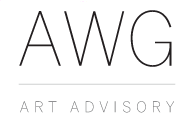11.10.2017
The Anxiety of Influence
Curated by Alex Glauber
In January of 1973 after five years of work, Yale University Professor Harold Bloom published “The Anxiety of Influence: A Theory of Poetry”, which offered the scholar’s interpretation on how poets contend, engage, and, if great, overcome the daunting shadow of their predecessors’ achievements. Bloom contested that creative inspiration was not autonomous but rather resulted from a poet’s ability to successfully grapple with the weight of historical achievement. “Weaker talents idealize; figures of capable imagination appropriate for themselves.”
This exhibition attempts to map one such network of influence using the work of Eric N. Mack as a contemporary access point.
02.16.2016
The Coveter
Curated by Alex Glauber
Fundamental to the human experience is the impulse to collect. It allows us to safeguard the past, understand the present, and organize the future. As Walter Benjamin noted, “Ownership is the most intimate relationship one can have to objects. Not that they come alive in him; it is he who lives in them.”1 Stemming from the Latin legere meaning “to gather”, it linguistically syncs to our earliest roles as hunter-gatherers. What fuels this quest for beauty is desire and while its focus is mutable, the tendency is not. Whether religious relics in the Middle Ages or antiquities like those assembled o the Grand Tours of the 18th century, individuals have always coveted material culture. For each of the artists in The Coveter, collecting informs, actuates, or determines his or her work. Whether expressed in content or concept— the compulsion to collect is inescapable.
03.08.2014
Idiosynchromism
Curated by Alex Glauber
Dickinson is delighted to present Idiosynchromism, an exhibition that explores the tradition of what many consider to be non-traditional pigments and colorants through examples of material culture and the work of fourteen artists spanning more than three hundred years.
If the Industrial Revolution had not produced an expansive spectrum of colors available premixed and tubed, artists might still rely on the chimerical color recipes found in medieval treatises or 19th century colourmen like George Field who sourced and created pigments for artists. What is easy to take for granted is that the evolution and expansion of the artist’s palette arrived at eccentricity out of technical necessity...
06.22.2012
rorschach
Phillips de Pury & Company is pleased to present “Rorschach”, a selling exhibition curated by Alex Glauber which explores the artistic tradition surrounding Hermann Rorschach’s projective personality assessment vernacularly known as the “Inkblot Test”. While the psychological phenomenon of the inkblot extends back beyond Rorschach’s 1921 tome Psychodiagnostik, its ubiquity since has enticed artists to engage it as a symbol and mechanism. By the time Bruce Conner underwent the test in 1958 he remarked how the popularity of the ten standardized inkblots utilized in the test diminished its efficacy. Nevertheless when Andy Warhol took up the subject in 1984 he revelaed an unlikely expressive desire when he made the presumptive mistake that he, like the patient, was to create inkblots which would be interpreted by a doctor, or, in his case, the public.




